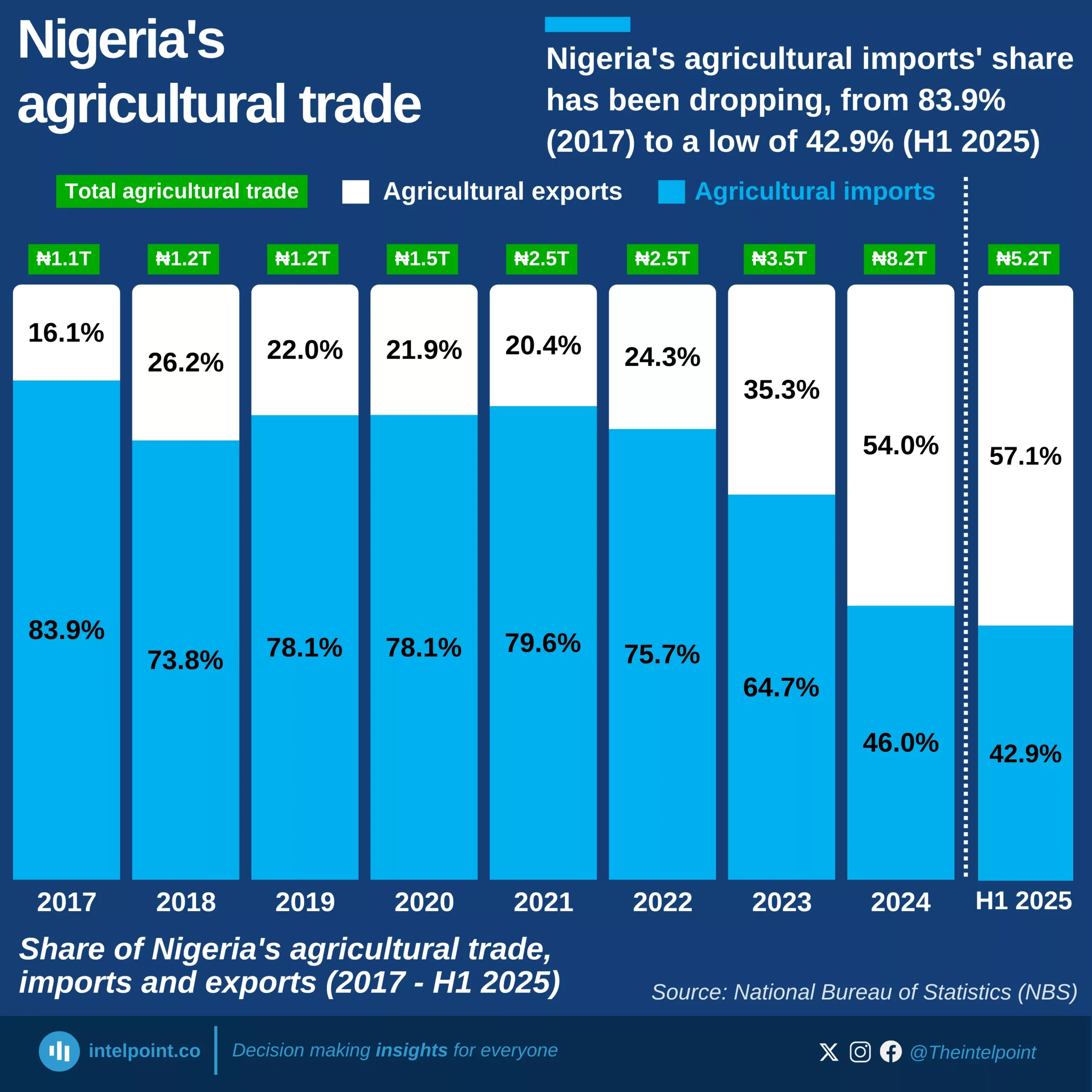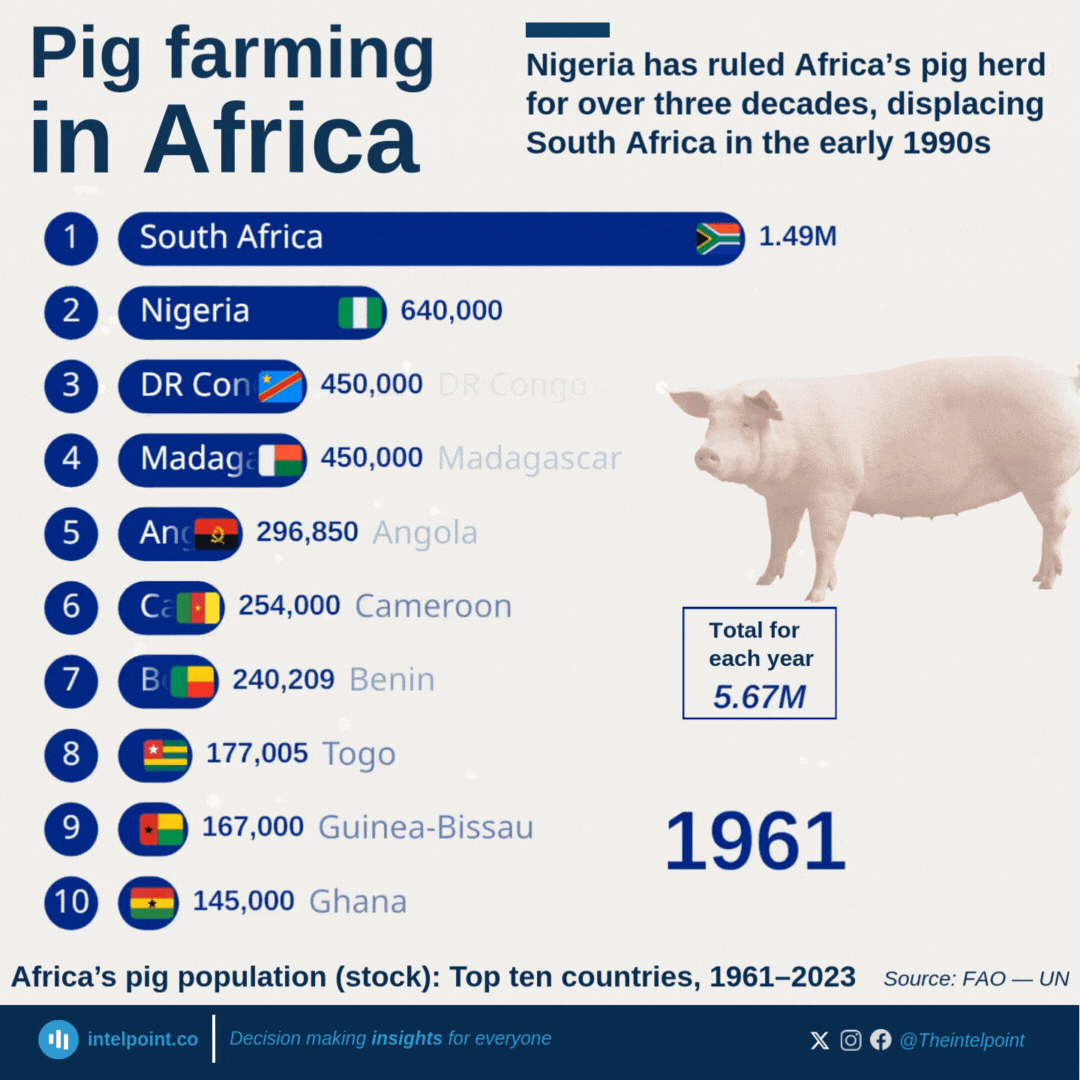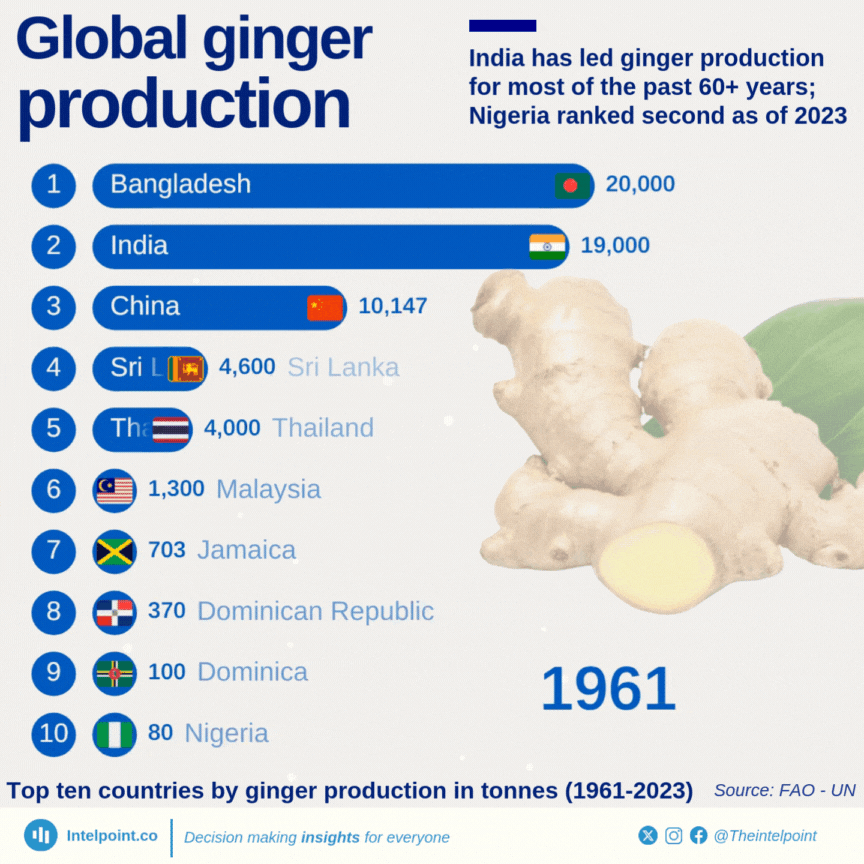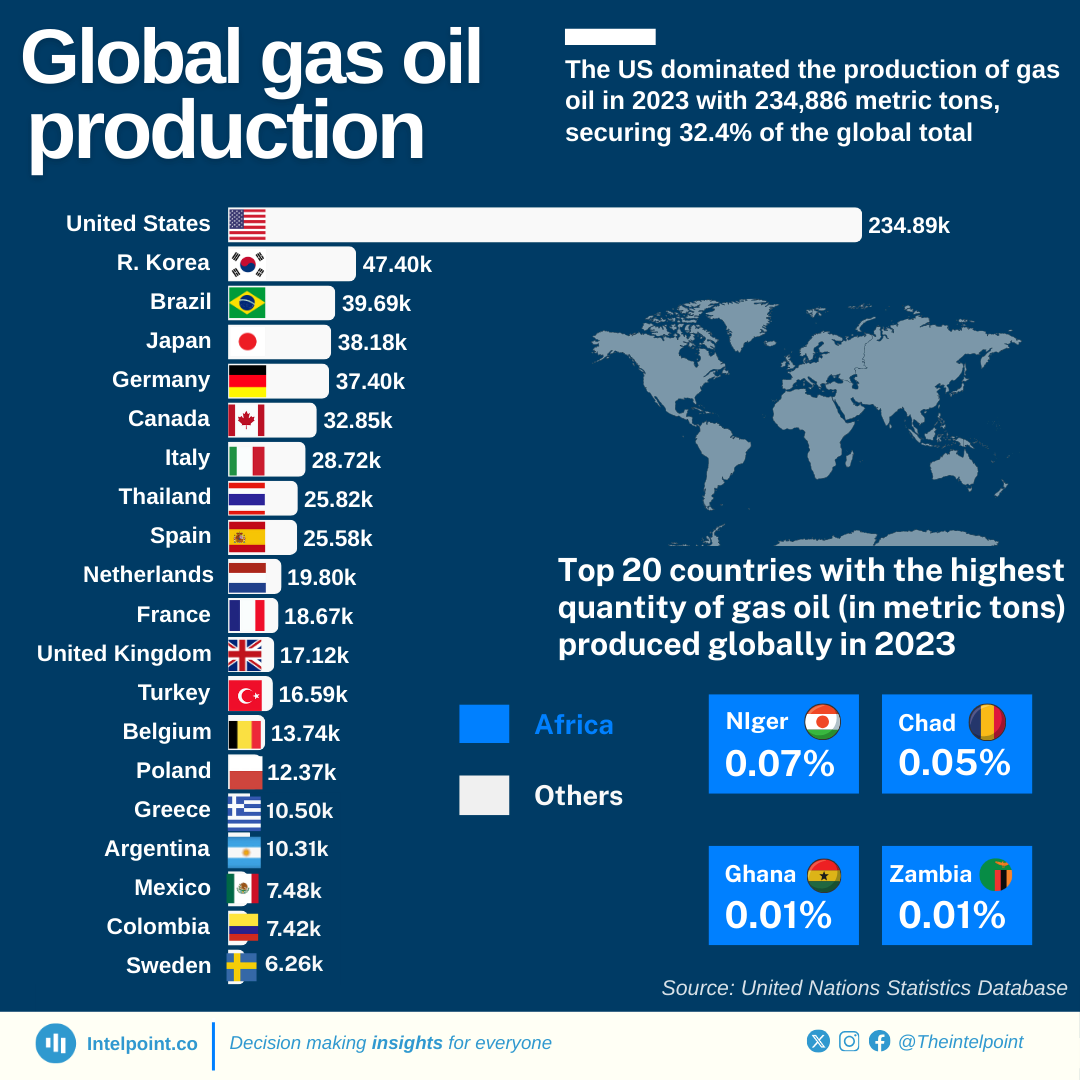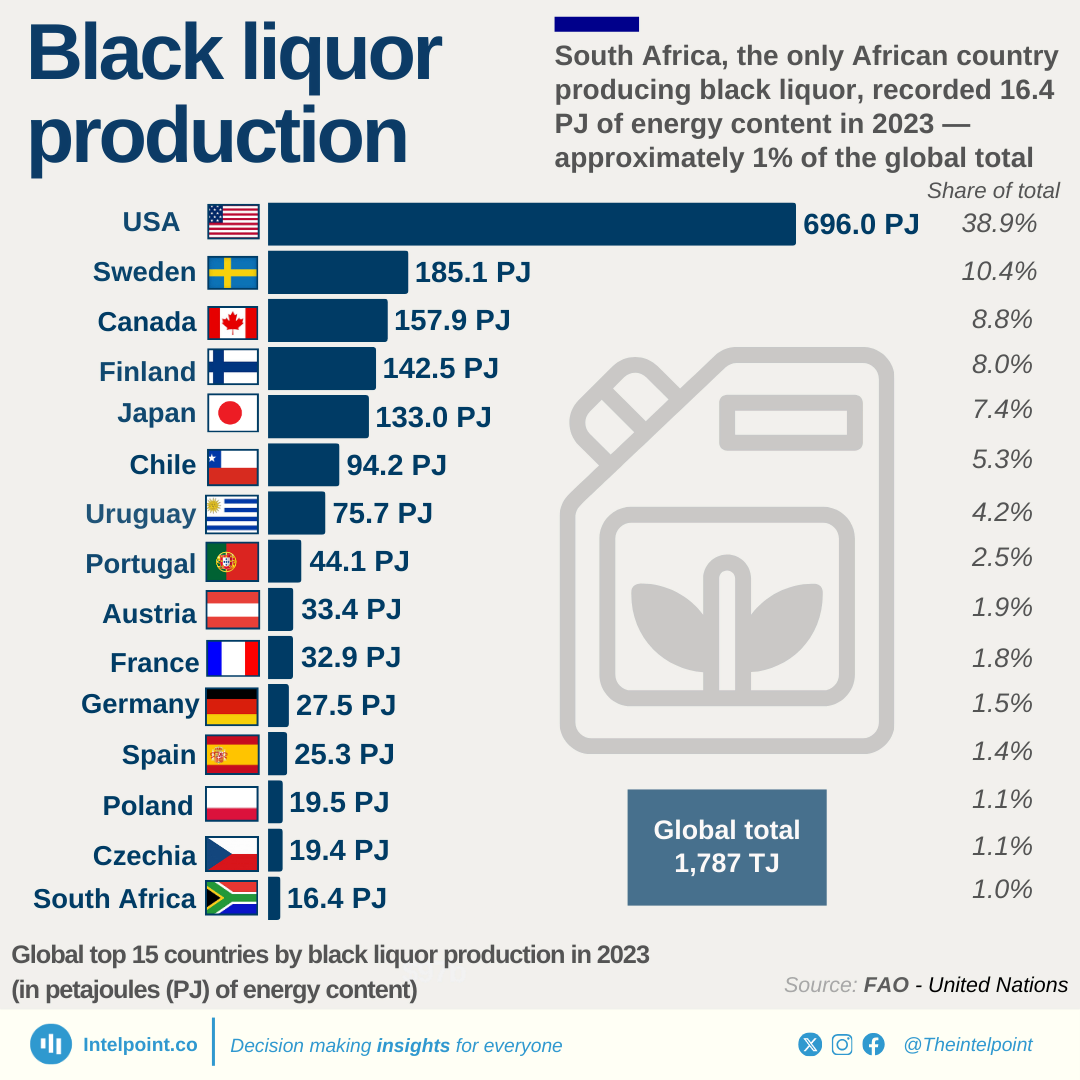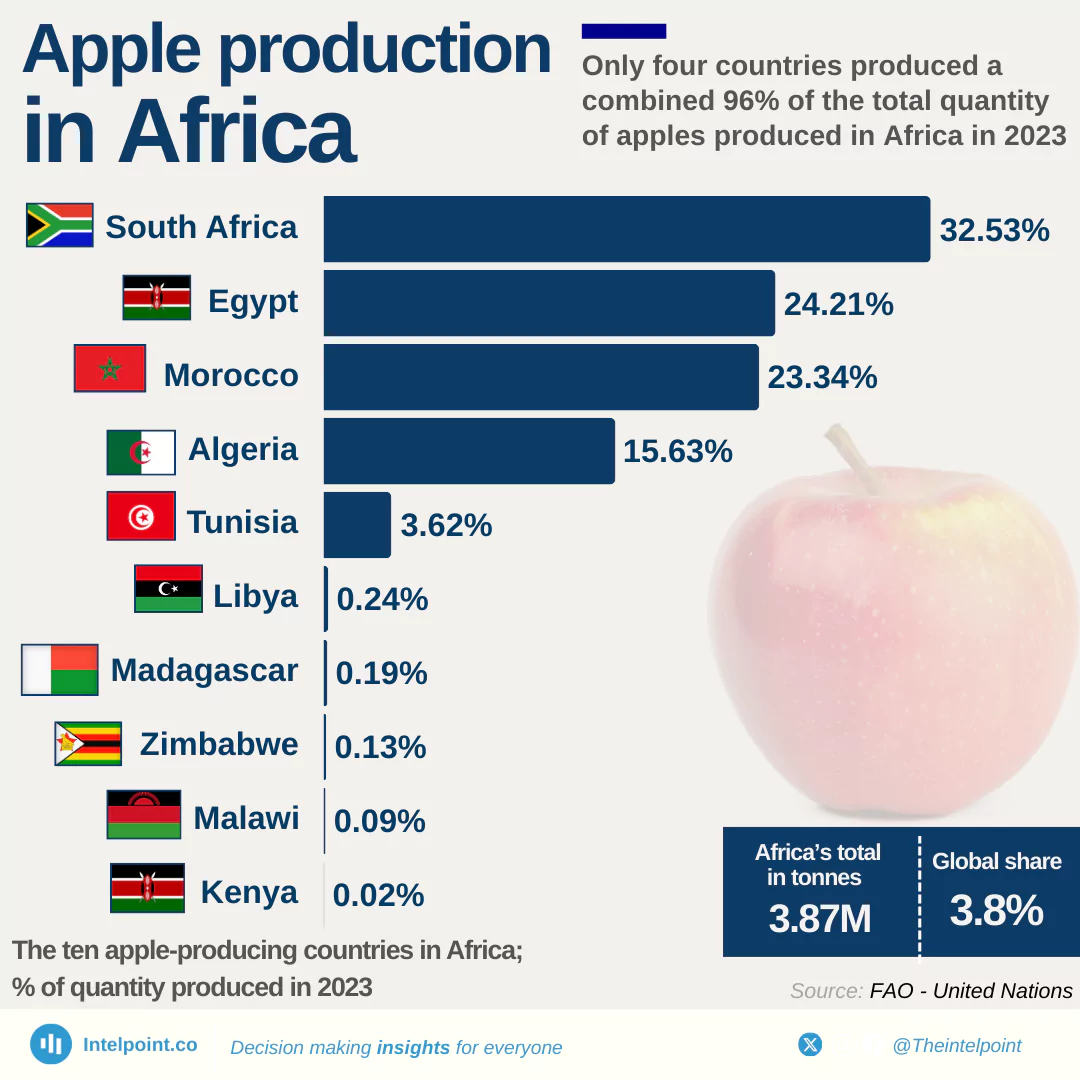Nigeria’s meat industry remains heavily skewed towards poultry, with 324.24 million chickens slaughtered in 2023, significantly outpacing other livestock. Goats and sheep, the next most slaughtered animals, were processed in far lower numbers at 28.23 million and 19.45 million, respectively. The relatively lower slaughter rates for pigs (8.11 million) and cows (3.32 million) reflect cultural preferences, pricing, and economic factors.
